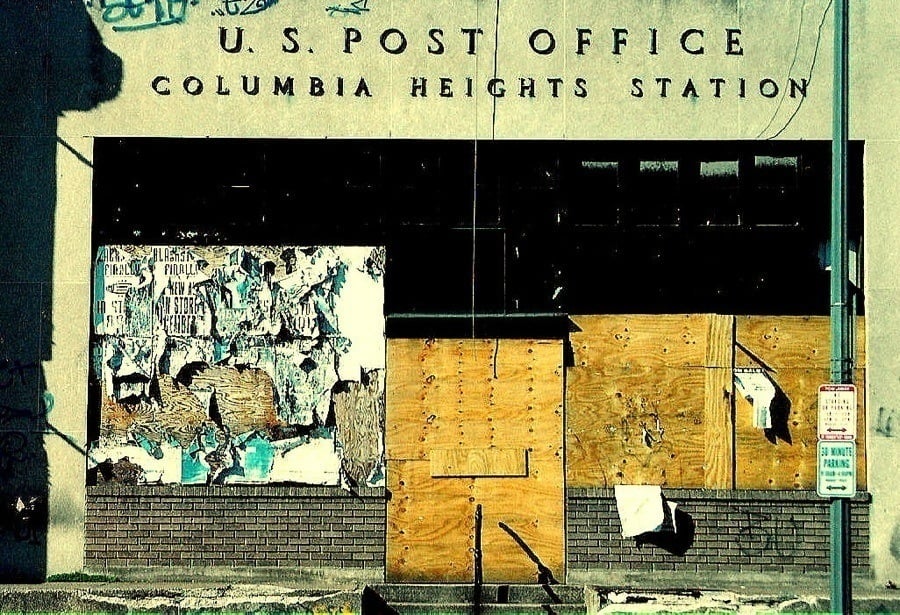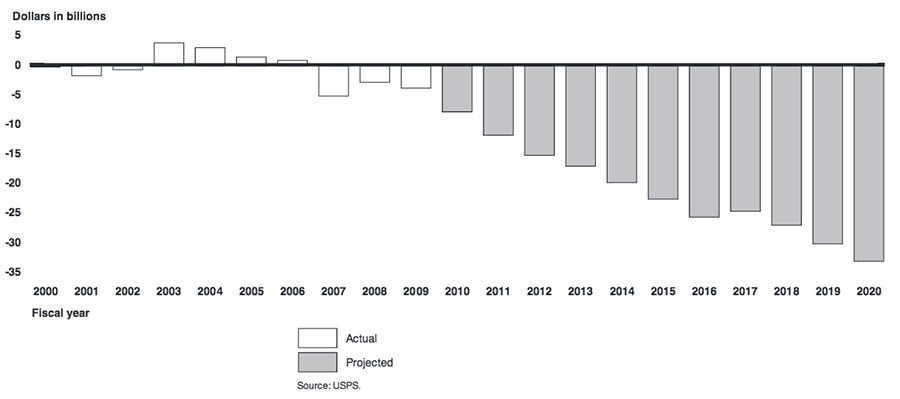Ballooning Debt

Shuttered post office in Washington, D.C. Image Source: Flickr
Back in 2010, the GAO predicted that by 2020, mail volume would fall by a further 15%. So far, this seems to be holding true, with mail volume in a steady decline. But the USPS neither prepared for nor responded to that decline. The upshot? Revenue never bounced back, and each year they had to borrow more money to stay (barely) afloat. The vicious cycle continued.
One issue is that whether in dire straights or not, the USPS still has an obligation to provide its employees with benefits. In 1971, Congress designated the USPS to be a self-supporting government agency, meaning that they would not rely on annual government payments to cover their operating costs. Its employees, though, still receive the same retirement plan as most other civilian federal employees.

“USPS Actual and Projected Net Income (Loss), Fiscal Years 2000 through 2020” Image Source: GAO
Furthermore, in 2006 — the USPS’s last good year — Congress imposed a new mandate requiring the USPS to pre-fund its employee health benefits in yearly payments of about $5.5 billion. By 2007, their finances were no longer fine, and now they were expected to make annual multi-billion dollar payments they had never had to make before. They began missing payments in 2011.
It was this kind of financial mismanagement that really put the USPS in its current hole. The organization isn’t simply being pushed out on an ice floe by technology — for one, online retailers like Amazon have greatly increased the number of packages being shipped. From 2010 to 2015, in fact, there was a 45% increase in shipping volume. There was a way for the USPS to capitalize on the new digital world, but they simply didn’t do it.
In its current form, the USPS is not sustainable. Most of its operating facilities are in desperate need of an upgrade (the age of the average mail truck is about 24 years) and it’s investing too much money into a product that’s a long way from breaking even.
Without government assistance, the USPS would have died out long before it accumulated this amount of debt. Capitalism is like Darwinism: the weakest go extinct. In this case, though, it seems we are painfully dragging the shriveled remains of the weakest link along.
If you can appreciate the strange beauty of an abandoned post office, check out the rest of our stunning photography of abandoned places. Then, if you thought the USPS was hit hard by the economic downturn, just take a look at what the average income after The Great Recession is like.





